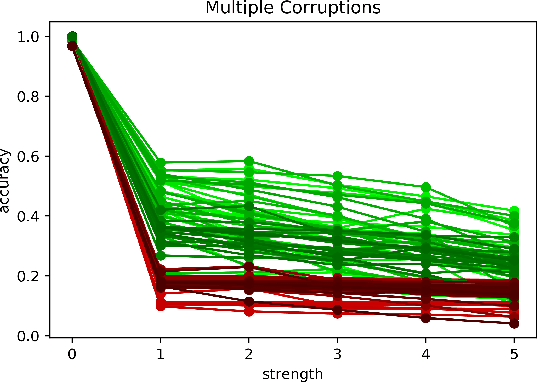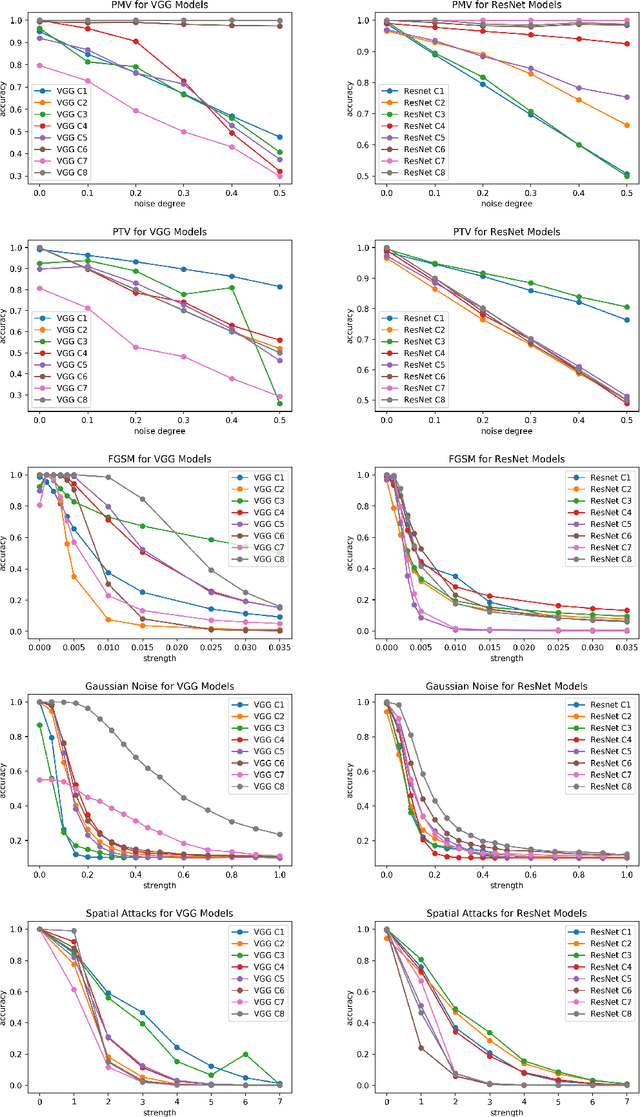Joël Oswald
Measuring Overfitting in Convolutional Neural Networks using Adversarial Perturbations and Label Noise
Sep 27, 2022



Abstract:Although numerous methods to reduce the overfitting of convolutional neural networks (CNNs) exist, it is still not clear how to confidently measure the degree of overfitting. A metric reflecting the overfitting level might be, however, extremely helpful for the comparison of different architectures and for the evaluation of various techniques to tackle overfitting. Motivated by the fact that overfitted neural networks tend to rather memorize noise in the training data than generalize to unseen data, we examine how the training accuracy changes in the presence of increasing data perturbations and study the connection to overfitting. While previous work focused on label noise only, we examine a spectrum of techniques to inject noise into the training data, including adversarial perturbations and input corruptions. Based on this, we define two new metrics that can confidently distinguish between correct and overfitted models. For the evaluation, we derive a pool of models for which the overfitting behavior is known beforehand. To test the effect of various factors, we introduce several anti-overfitting measures in architectures based on VGG and ResNet and study their impact, including regularization techniques, training set size, and the number of parameters. Finally, we assess the applicability of the proposed metrics by measuring the overfitting degree of several CNN architectures outside of our model pool.
 Add to Chrome
Add to Chrome Add to Firefox
Add to Firefox Add to Edge
Add to Edge